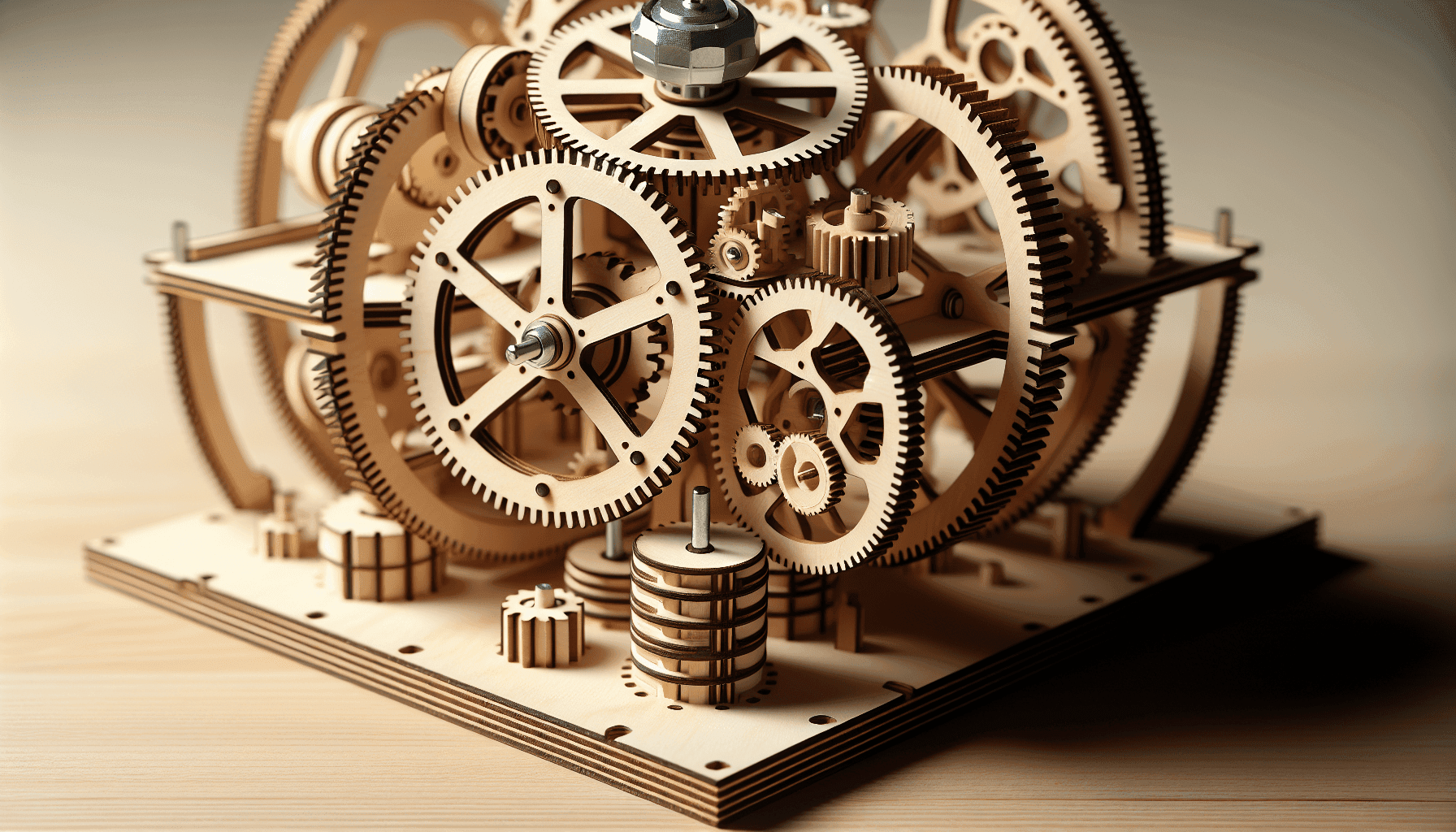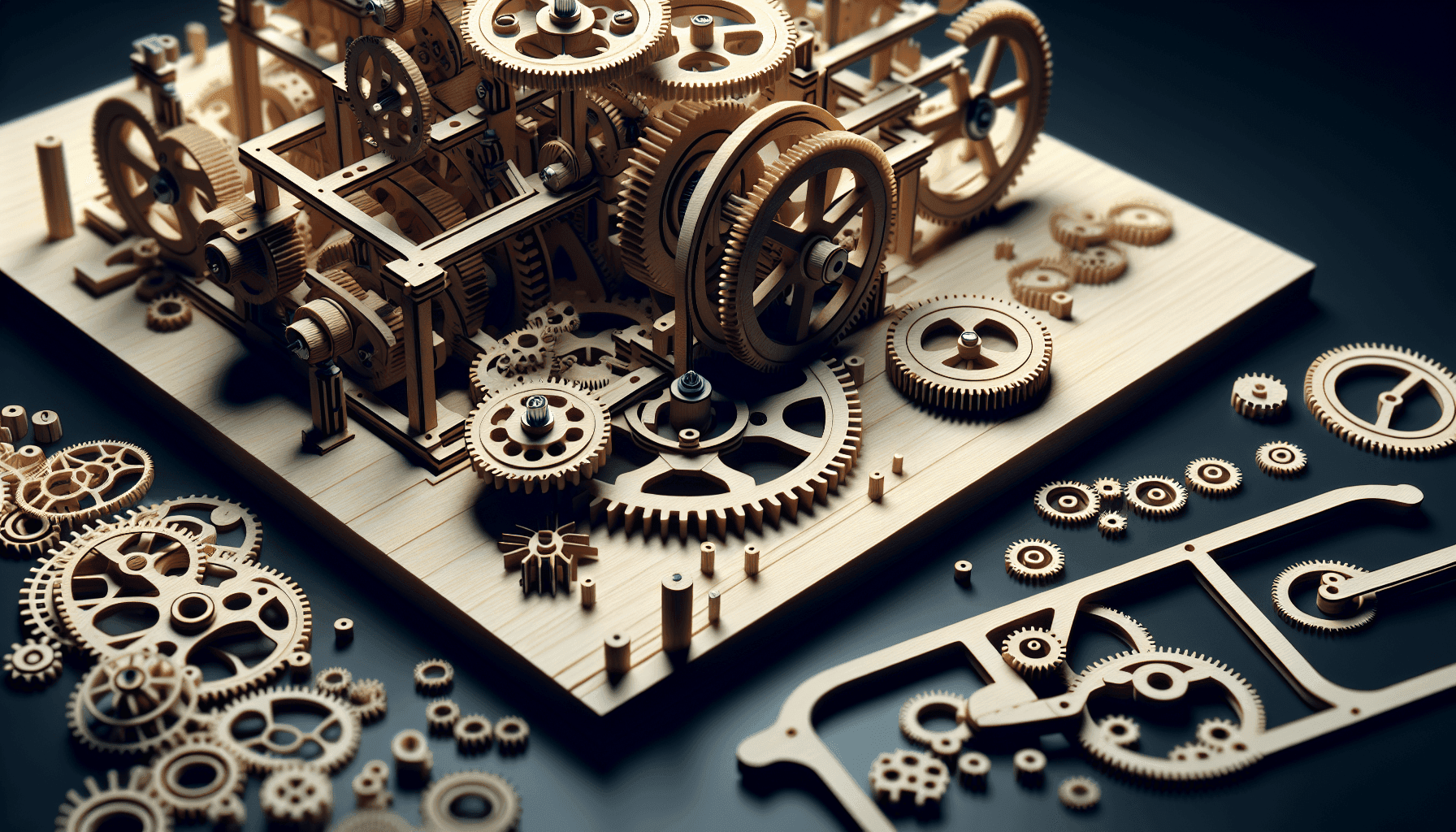Have you ever gazed upon a beautifully crafted 3D wooden model and wondered what’s lurking beneath its surface? Whether it’s a mechanical dragon that flaps its wings or a static tree sculpture, these intricate creations are more than just decor; they are marvels of engineering and art. In this article, you’ll uncover the nuances that differentiate mechanical from non-mechanical 3D wooden models, helping you appreciate the brilliance behind each piece.

Understanding 3D Wooden Models
Before diving into the core differences, it helps to grasp what 3D wooden models are. At their essence, these models are kits made primarily from wood, which you assemble into a three-dimensional object. Different brands like Robotime, Rokr, Ugears, and Wood Trick offer varying styles and complexities, allowing enthusiasts to engage with these puzzles at multiple levels of expertise.
The Charm of 3D Wooden Models
3D wooden models combine the allure of puzzles with the beauty of woodcraft. These models bring tactile joy: the smell of the wood, the satisfaction of snapping pieces together, and the accomplishment of seeing a complete model come to life. They appeal to hobbyists, collectors, and even those looking for a creative way to relieve stress.
What is a Mechanical 3D Wooden Model?
A mechanical 3D wooden model is more than a static figure. It is an intricate assembly of parts designed to move or perform a function. Think of these as wooden machines intricately designed to offer movement, whether it’s a clock ticking away or a mini car that rolls forward.
Features of Mechanical 3D Wooden Models
Mechanical models are known for their complexity and finesse. Here’s what sets them apart:
- Intricate Parts: These models often consist of multiple interlocking parts that work in harmony to perform a specific function, like gears in a clock.
- Functionality: Whether it’s a wind-up engine or a functional music box, mechanical models offer a utility beyond their visual appeal.
- Movement: This is the essence of a mechanical model. The capacity for movement, be it wheels turning or gears shifting, adds a dynamic element to the model.
Brands Specializing in Mechanical Models
- Ugears: Known for its elaborate designs and intricate engineering, Ugears models often feature themes ranging from automotive to nautical, each with kinetic energy at its core.
- Rokr: This brand combines aesthetic appeal with functionality, offering models that feature everything from working safes to mechanical clocks.
- Wood Trick: They provide models that are easy-to-assemble yet still capture the complexity needed for a mechanical representation.
What is a Non-Mechanical 3D Wooden Model?
In contrast, a non-mechanical 3D wooden model is more aligned with traditional puzzles. These models take on static forms, offering a visual marvel without the complexity of movement. They are perfect for those who enjoy the meditative experience of assembling a 3D object without the added intricacy of moving parts.
Features of Non-Mechanical 3D Wooden Models
Non-mechanical models provide simplicity and elegance. Here are their main characteristics:
- Static Structure: Once assembled, these models hold their form without any movement. They are appreciated for their aesthetic value.
- Simplicity: With fewer parts, they are generally easier and quicker to assemble, making them accessible to beginners.
- Artistic Appeal: These models often focus more on artistic expression, creating stunning sculptures or replicas that capture detail and beauty.
Popular Brands for Non-Mechanical Models
- Robotime: Known for its artistic sets like dollhouses and architectural wonders, Robotime excels in providing non-mechanical models that are both charming and accessible.
- Handmadecity: Specializes in bespoke designs that emphasize craftsmanship and aesthetics without added mechanics.
- Wooden City: Offers a range of artistic kits that serve as beautiful decor pieces or gifts.
Comparing Mechanical and Non-Mechanical 3D Wooden Models
To distill the differences clearly, let’s break down the key elements in a comparison:
| Feature | Mechanical Models | Non-Mechanical Models |
|---|---|---|
| Complexity | High – with moving parts | Moderate – focus on assembly |
| Functionality | Offers mechanical functions and movement | Primarily aesthetic, no moving parts |
| Assembly Time | Typically longer due to intricate parts | Generally quicker and less complex |
| Ideal for | Mechanical enthusiasts, experienced hobbyists | Beginners, art enthusiasts, children |
| End Use | Functional decor, demonstration of mechanical principles | Static display, artistic piece, decorative item |
Which Should You Choose?
Choosing between a mechanical and a non-mechanical 3D wooden model largely depends on your interests and what you seek from the experience. If you relish understanding the mechanics behind movements and enjoy the challenge of assembling a movable model, then the mechanical version might be your match. On the other hand, if you prefer a relaxing build focusing on aesthetics, non-mechanical models are your canvas.

The Mindful Journey of Building 3D Wooden Models
Regardless of your choice, both types of models offer a mindful journey. Building a 3D wooden model is not just about the final product, but the experience of piecing it together. It’s a hands-on activity that requires patience, concentration, and creativity. As you immerse yourself in the process, you may find a unique sense of fulfilment and relaxation.
Enhancing Skills Through 3D Modeling
Engaging with these models hones a variety of skills:
- Problem Solving: Figuring out how pieces fit together fosters logical thinking and strategy development.
- Patience and Focus: The process involves dedication and attention, teaching patience and perseverance.
- Creativity: Though models come with guides, there’s always room for personal touch or modification for a unique creation.
- Hand-eye Coordination: Handling small parts to assemble a complex structure enhances coordination and dexterity.
The Joy of Completion
As you place the last piece and step back to admire your creation, there’s an undeniable sense of achievement. This sense of accomplishment enhances confidence and encourages tackling new projects.
Tips to Keep in Mind While Building
Whether you’re tackling a mechanical or a non-mechanical model, here are some tips to ensure a smooth process:
- Read the Instructions Carefully: Before starting, go through the entire set of instructions. Understanding the sequence of assembly can save time and prevent mistakes.
- Organize the Parts: Lay out all pieces categorically to ensure easy access during assembly. It prevents scrambling to find the right piece later on.
- Take Breaks: If you feel frustrated or stuck, step away for a short break. A fresh perspective can often resolve blockages that seem insurmountable.
- Mind the Glue: Some non-mechanical models require glue for a stronger bond between pieces. Use it sparingly and with precision to avoid mess.
- Celebrate Your Progress: Pause to admire the progress you’ve made. Sharing photos with friends or on social media can extend satisfaction and motivate you further.
Displaying Your Masterpiece
Once your model is complete, you’ll want to find the perfect spot for your masterpiece. Consider a place that highlights its features, where natural light can reveal the intricacies of wood and detail. These models make fantastic centrepieces in living rooms or intriguing conversation starters in an office or study.
Caring for Your Wooden Model
To maintain the beauty and integrity of your model:
- Dusting: Regular gentle dusting helps keep the wood in top condition.
- Avoiding Sunlight: Excessive direct sunlight can fade the wood over time, so choose your model’s spot carefully.
- Stable Environment: Keep models in a stable environment free from extreme humidity or dryness to prevent warping.
Conclusion
Now that you’ve explored the fascinating realm of 3D wooden models and discerned the differences between mechanical and non-mechanical varieties, you’re equipped to choose the right puzzle for your interests or as a gift for someone special. The choice between movement or stillness, practicality or aesthetics, is yours. Each project holds vast potential for joy and learning, offering a tangible connection between art and engineering that benefits both novices and seasoned creators alike.